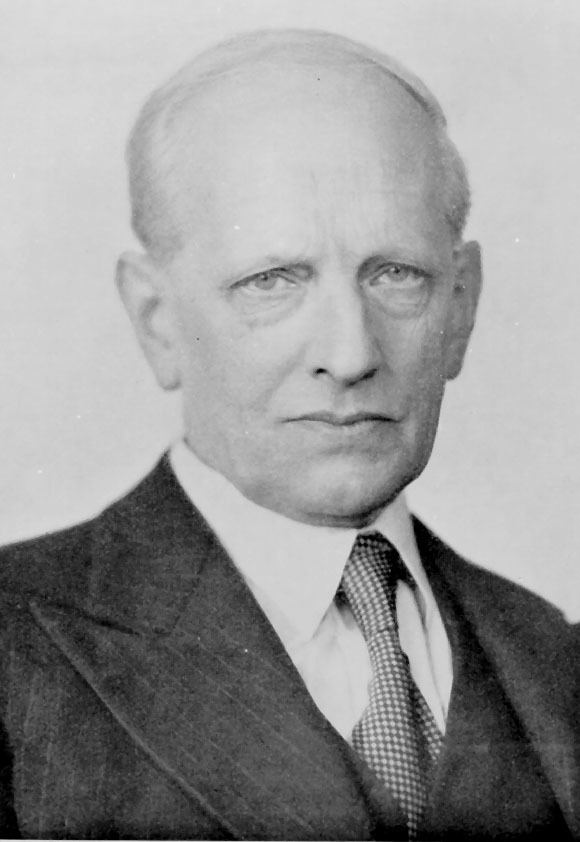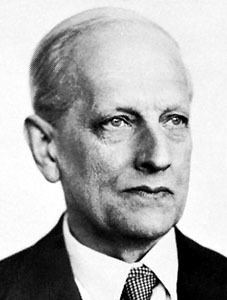Name Nicolai Hartmann | Role Philosopher | |
 | ||
Notable ideas Strata of Being (Seinsschichten) Died October 9, 1950, Gottingen, Germany Books New ways of ontology, Moral phenomena, Moral Freedom, Der Aufbau der realen Welt, Zur Grundlegung der Ontol Similar People Max Scheler, Dietrich von Hildebrand, Gottfried Wilhelm Leibniz, Richard Honigswald | ||
Nicolai Hartmann ( [ˈhaɐ̯tman]; 20 February 1882 – 9 October 1950) was a Baltic German philosopher. He is regarded as a key representative of critical realism and as one of the most important twentieth century metaphysicians.
Contents
- Nicolai hartmann grieving hearts
- Biography
- Ontological theory
- Quotations
- Works in German
- Translations in English
- Algebrah endnu en dag prod nicolai hartmann
- References

Nicolai hartmann grieving hearts
Biography

Hartmann was born of German descent in Riga, which was then the capital of the Governorate of Livonia in the Russian Empire, and which is now in Latvia. He was the son of the engineer Carl August Hartmann and his wife Helene, born Hackmann. He attended from 1897, the German-language high school in Saint Petersburg. In the years 1902–1903 he studied Medicine at the University of Tartu (then Jurjev), and 1903–1905 classical philology and philosophy at the Saint Petersburg Imperial University with his friend Vasily Sesemann. In 1905 he went to the University of Marburg, where he studied with the neo-Kantians Hermann Cohen and Paul Natorp. In Marburg began a lifelong friendship with Heinz Heimsoeth. In 1907 he received his doctorate with the thesis Das Seinsproblem in der griechischen Philosophie vor Plato (The Problem of Being in Greek Philosophy Before Plato). In 1909 he published the book Platos Logik des Seins (The Logic of Being in Plato). The same year he completed his habilitation on Proclus: Des Proklus Diadochus philosophische Anfangsgründe der Mathematik (Proclus Diadochus' Philosophical Elements of Mathematics).

In 1911, Hartmann married Alice Stepanitz, with whom he had a daughter, Dagmar, in 1912. In 1912 he published Die philosophischen Grundlagen der Biologie (The Philosophical Foundations of Biologie). From 1914 to 1918 he did military service as an interpreter, letter censor, and intelligence officer. In 1919, i.e., after the war, he received a position as Privatdozent in Marburg. Around this time he met Martin Heidegger. In 1920 he became Associate Professor (außerordentlicher Professor) and in 1921 appeared the work that established him as an independent philosophical thinker, Grundzüge einer Metaphysik der Erkenntnis (Foundation of a Metaphysics of Knowledge). The following year he became Full Professor (ordentlicher Professor) as successor of the Chair held by Natorp. In 1925, he moved to Cologne, where he came into contact with Max Scheler. In 1926 he published his second major work—Ethik—in which he develops a material value ethics akin to that of Scheler. The same year he divorced from his wife.

In 1929 Hartmann married Frida Rosenfeld, with whom he had a son, Olaf (1930), and a daughter, Lise (1932). In 1931 he became Professor of Theoretical Philosophy in Berlin. He held the Chair until 1945. During this time he successively published many pieces of his ontology: Das Problem des geistigen Seins (The Problem of Spiritual Being) (1933), Zur Grundlegung der Ontologie (On the Foundation of Ontology) (1935), Möglichkeit und Wirklichkeit (Possibility and Actuality) (1938) and Der Aufbau der realen Welt. Grundriß der allgemeinen Kategorienlehre (The Structure of the Real World. Outline of the General Theory of Categories) (1940). The unrests of the National Socialist period seems to have left Hartmann relatively undisturbed in his task of developing a new ontology. In the "SD-Dossiers über Philosophie-Professoren" (i.e. SD-files concerning philosophy professors) that were set up by the SS Security Service (SD) Nicolai Hartmann was classified from an SS-point of view in the following way: "has always been a nationalist. Loyal to National Socialism, too, without political activity, but a social attitude has to be acknowledged. (cf. donations to the NSV and caring for vacation host children)".
In 1942, Hartmann edited a volume entitled Systematische Philosophie, in which he contributed the essay Neue Wege der Ontologie (New Ways of Ontology), which summarizes his work in ontology.
Between 1945 and 1950, Hartmann taught in Göttingen. He died of a stroke in 1950. In the year of his death, there appeared his Philosophie der Natur (Philosophy of Nature). His works Teleologisches Denken (Teleological Thinking) (1951) and Ästhetik (Aesthetics) (1953) were published posthumously.
He is regarded as an important representative of critical realism and as one of the major metaphysicians of the twentieth century. Among Hartmann's many students were Boris Pasternak, Hans-Georg Gadamer, Emil Cioran, Jakob Klein, Delfim Santos and Max Wehrli. He is the modern discoverer of emergence — originally called by him categorial novum. His encyclopedic work is basically forgotten today, although famous during his lifetime. His early work in the philosophy of biology has been cited in modern discussions of genomics and cloning, and his views on consciousness and free will are currently in vogue among contributors to the Journal of Consciousness Studies.
Ontological theory
In Hartmann's ontological theory, the levels of reality are: (1) the inorganic level (German: anorganische Schicht), (2) the organic level (organische Schicht), (3) the psychical/emotional level (seelische Schicht) and (4) the intellectual/cultural level (geistige Schicht). In the Structure of the Real World (Der Aufbau der realen Welt), Hartmann postulates four laws that apply to the levels of reality.
- The law of recurrence: Lower categories recur in the higher levels as a subaspect of higher categories, but never vice versa.
- The law of modification: The categorial elements modify in their recurrence in the higher levels (they are shaped by the characteristics of the higher levels).
- The law of the novum: The higher category is composed of a diversity of lower elements, but it is a specific novum that is not included in the lower levels.
- The law of distance between levels: Since the different levels do not develop continuously but in leaps, they can be clearly distinguished.
Quotations
"The tragedy of man is that of somebody who is starving and sitting at a richly laden table but does not reach out with his hand, because he cannot see what is right in front of him. For the real world has inexhaustible splendour, the real life is full of meaning and abundance, where we grasp it, it is full of miracles and glory."
